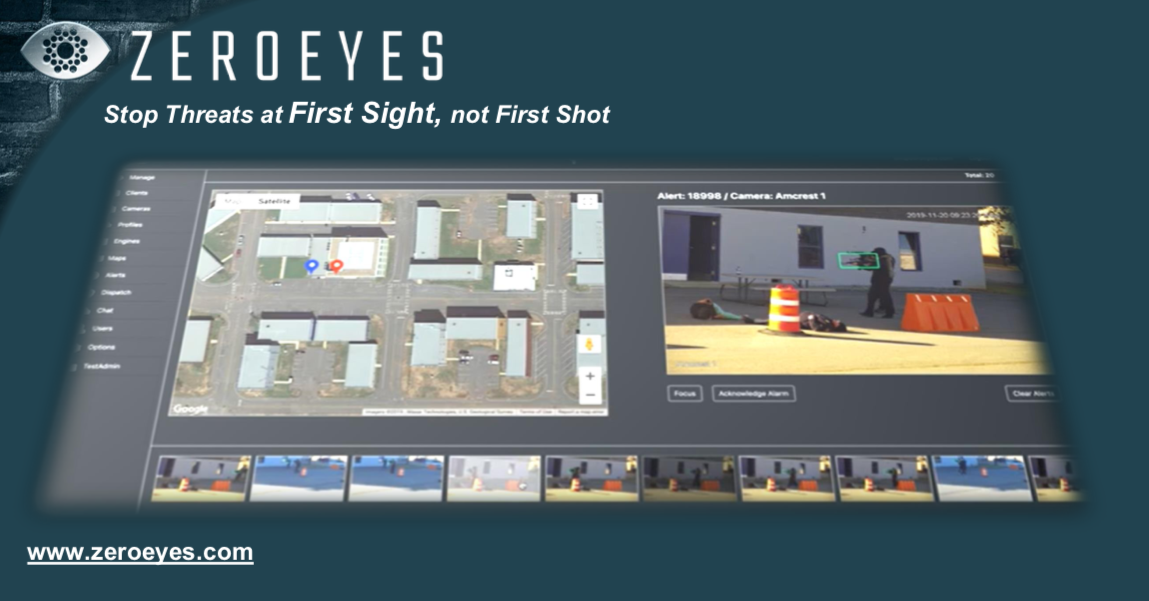In 2019, over 400 mass shootings were reported in the U.S.
The average response time in these situations was between 12 and 15 minutes, according to ZeroEyes, a video analytics company based at the Pennovation Center in Grays Ferry.
That’s long enough to cause a lot of destruction. ZeroEyes aims to curb that: The company uses artificial intelligence to predict potential threats and prevent mass shooter situations from escalating. The technology, which can be integrated with analog and digital security cameras already installed in public areas, detects weapons in real time.
“The cofounders were just sick of seeing headlines where kids got killed or people in an office building got killed,” said Kieran Carroll, ZeroEyes’ VP of enterprise strategy and government affairs. “When we were in the military, we would have loved to have a tool like this.”

Kieran Carroll. (Courtesy photo)
Mike Lahiff and Rob Huberty, both former Navy SEALs who received their MBAs from The Wharton School, started the company two years ago. They combined their academic and military backgrounds with other former SEALS to figure out a better solution to mass shootings.
ZeroEyes is a part of the Bunker Labs network, which is dedicated to helping those in the military community launch their own businesses. It also participated in Dreamit Venture’s fall 2019 SecureTech Program for physical security startups and was nominated this month as a top tech startup for the 2020 PACT Awards.
ZeroEyes currently has 16 full-time employees, nine of whom are former military. Carroll said its tech team does not have any formally trained data scientists with an AI background. Instead, its team is entirely self-taught through a trial-and-error process that involved testing the technology at shopping malls, offices parks and schools. From there, a comprehensive data set with thousands of images was constructed.
The AI software is able to detect assault rifles (AR and AK style weapons), semiautomatic pistols and shotguns. It will only detect a weapon if it is visible.
Here’s the breakdown of how the ZeroEyes software works:
- ZeroEyes detects an approaching threat through existing security cameras. Every camera has a real-time streaming protocol (RTSP) data path.
- ZeroEyes’ analytic platform, DeepZero, runs over two parts: pre-processing and inferencing. Pre-processing uses motion detection to capture 10 frames, or 10 opportunities per second to find a gun. Inferencing determines if a gun is present. Every key frame image goes through the ZeroEyes dataset.
- Next, the alert of a weapon goes to the monitoring team or onsite security team.
- If a true weapon is detected, an alert is sent to a local emergency dispatch (such as a 911 call center), onsite security staff, police and school administrators. This process takes three to five seconds and bypasses the traditional dispatch process.
- The software integrates with existing satellite mapping of buildings. As a shooter passes a camera, the map will light up. This allows first responders to know the precise location of a threat. The mapping system can prevent a shooter from entering a building by locking the doors.

(Image via ZeroEyes)
“With our system, you can essentially have a person sitting behind every single camera,” Carroll said. “This provides very clear situational awareness and allows people to make quicker decisions which ultimately shaves off time.”
When ZeroEyes ran active shooter drills at Rancocas Valley Regional High School in Burlington County, New Jersey, where the system is currently operating, the team saw a 50% reduction in response times.
ZeroEyes receives two to three false positives per day over more than 50 cameras, but clients will never get false positives, only the alert of a real threat.
Clients “won’t even have to think about [a shooting] until it happens,” Carroll said.
https://www.youtube.com/watch?v=WUjf5MAPxoo&feature=youtu.be
The system is currently on site and operational in schools and other buildings in New Jersey, New York, Pennsylvania, Wisconsin and D.C. In the coming months, Carroll says it will be installed into 20 more schools. The system will also soon be installed in a “major Chicago skyscraper.”
As ZeroEyes expands to more schools and hires more people, it aims to the best and the fastest in the weapons detection industry.
“In the next 10 years, in every public place, there needs to be a weapons detection capability in that building,” Carroll said.
P.S. Check out the Philadelphia Shooting Victims Dashboard, which shows data for every gun shot victim in the city for the last five years.
Before you go...
Please consider supporting Technical.ly to keep our independent journalism strong. Unlike most business-focused media outlets, we don’t have a paywall. Instead, we count on your personal and organizational support.
Join our growing Slack community
Join 5,000 tech professionals and entrepreneurs in our community Slack today!

Federal grant freeze fire drill leaves orgs scrambling to brace for Trump-era priorities

Entrepreneurship unifies: Introducing a new podcast on ecosystem building

GEMMABio rakes in $34M raise, a huge boost to the Philly life sciences scene


